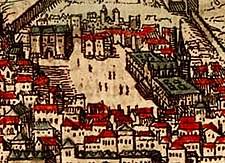Organisation
The rules of the Hospital were granted by King Manuel I in 1504, and were based on the rules of contemporary hospitals in Florence and Siena. Initially the Hospital had three infirmaries (enfermarias) located in the upper storey, where the ill were treated. The groundfloor was occupied by the Hospital personnel (around 50 people, many of whom lived in the building). The first floor housed dependencies like the kitchen, refectory and pharmacy, as well as rooms for abandoned children (called expostos), beggars and the mentally ill.
Initially, it is estimated that the Hospital was capable of housing around 250 people, with 2500-3000 people being treated every year. Even though the premises were victim of several fires, the facilities were greatly expanded until the middle of 18th century, when the Hospital had around 12 infirmaries. It was the most important health institution in the city and an important centre for the practical study of anatomy and medicine in Portugal.
The Hospital was initially administered by a provedor appointed by the King, but after 1564 the Hospital was run by the Irmandade da Misericórdia (Brotherhood of the Mercy), an important Portuguese religious charity established in 1498 that exists to this day.
Destruction
Things changed with the massive 1755 earthquake, in which a great part of the city was destroyed by the quake itself and the fire that followed. The situation was worsened by the fact that the All Saints Hospital was greatly damaged, and the surviving patients and wounded by the quake were housed in undamaged convents and palaces. The government of King Joseph I, headed by the Marquis of Pombal, quickly started rebuilding the Hospital, which was soon treating the ill again.
For some reason, possibly related to financial constraints, the Hospital was never fully rebuilt. The Hospital facilities were transferred in 1775 to the building of the Colégio de Santo Antão, a Jesuit college that was confiscated by the Crown after the Jesuit Order was expelled from Portugal in 1759. The new Hospital was renamed Hospital de São José, paying hommage to King Joseph I. The remnants of the All Saints Hospital were demolished and a new square was created, the Praça da Figueira (Square of the Fig Tree).

The Lisbon Cathedral, often called simply the Sé, is a Roman Catholic cathedral located in Lisbon, Portugal. The oldest church in the city is the seat of the Patriarchate of Lisbon. Built in 1147, the cathedral has survived many earthquakes and has been modified, renovated and restored several times. It is nowadays a mix of different architectural styles. It has been classified as a National Monument since 1910.
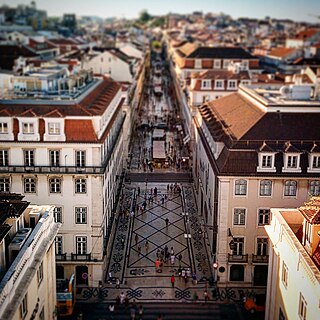
The Baixa(Downtown), also known as the Baixa Pombalina is a neighborhood in the historic center of Lisbon, Portugal. It consists of the grid of streets north of the Praça do Comércio, roughly between the Cais do Sodré and the Alfama district beneath the Lisbon Castle, and extends northwards towards the Rossio and Figueira squares and the Avenida da Liberdade (Lisbon), a tree-lined boulevard noted for its tailoring shops and cafes.

Azulejo is a form of Portuguese and Spanish painted tin-glazed ceramic tilework. Azulejos are found on the interior and exterior of churches, palaces, ordinary houses, schools, and nowadays, restaurants, bars and even railways or subway stations. They are an ornamental art form, but also had a specific functional capacity like temperature control in homes.

The Church of Nossa Senhora da Conceição is a church in the civil parish of Madalena, in the municipality of Lisbon.

Ribeira Palace was the main residence of the Kings of Portugal, in Lisbon, for around 250 years. Its construction was ordered by King Manuel I of Portugal when he found the Royal Alcáçova of São Jorge unsuitable. The palace complex underwent numerous reconstructions and reconfigurations from the original Manueline design, ending with its final Mannerist and Baroque form.

The Praça do Comércio is a large, harbour-facing square in Portugal's capital, Lisbon.
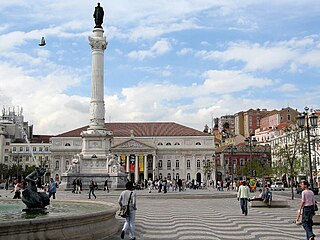
The Rossio is the popular name of the King Pedro IV Square in the city of Lisbon, in Portugal. It is located in the Pombaline Downtown of Lisbon and has been one of its main squares since the Middle Ages. It has been the setting of popular revolts and celebrations, bullfights and executions, and is now a preferred meeting place of Lisbon natives and tourists alike.

The Pombaline style was a Portuguese architectural style of the 18th century, named after Sebastião José de Carvalho e Melo, the first Marquês de Pombal, who was instrumental in reconstructing Lisbon after the earthquake of 1755. Pombal supervised the plans drawn up by the military engineers Manuel da Maia, Eugénio dos Santos and Elias Sebastian Pope. The new city was laid out on a grid plan with roads and pavements fixed at 40 ft wide (12 m). The previously standing Royal Palace was replaced with the Praça do Comércio which, along with square Rossio, defines the limits of the new city.

The Praça da Figueira is a large square in the centre of Lisbon, in Portugal. It is part of the Lisbon Baixa, the area of the city reurbanised after the 1755 Lisbon earthquake.

The Cathedral Basilica of Salvador, officially dedicated to the Transfiguration of Christ and named Primatial Cathedral Basilica of the Transfiguration of the Lord is the seat of the Archbishop of the city of Salvador, in the State of Bahia, in Brazil. The Archbishop of Salvador is also ex officioPrimate of Brazil. The structure was built by the Society of Jesus as part of a large Jesuit monastic and educational complex. The current church is the built on the site, and was consecrated in 1654. After the expulsion of the Jesuits from Brazil in 1759 the school and church were transferred to the Archbishopric of Bahia. Archbishop Augusto Álvaro da Silva ordered the demolition of the existing cathedral of Salvador in 1933 to construct a tram line, and elevated the existing Jesuit structure to the status of basilica.
The architecture of the Portuguese Renaissance intimately linked to Gothic architecture and gradual in its classical elements. The Manueline style was a transitional style that combined Renaissance and Gothic ornamental elements to buildings that were architectonically closer to Gothic architecture, as is the Isabelline style of Spain. Manueline was succeeded by a brief Early Renaissance phase, closer to Classical canons, followed by the adoption of Mannerist forms. Portuguese Mannerism, specially in secular architecture, is characterised by simplicity in the organisation of façades and relative lack of decoration, being often referred to as Estilo Chão. Even with the arrival of Baroque architecture in the late 17th century, Portuguese architecture continued to use Mannerist forms well into the 18th century.

The Igreja de São Roque is a Roman Catholic church in Lisbon, Portugal. It was the earliest Jesuit church in the Portuguese world, and one of the first Jesuit churches anywhere. The edifice served as the Society’s home church in Portugal for over 200 years, before the Jesuits were expelled from that country. After the 1755 Lisbon earthquake, the church and its ancillary residence were given to the Lisbon Holy House of Mercy to replace their church and headquarters which had been destroyed. It remains a part of the Holy House of Mercy today, one of its many heritage buildings.
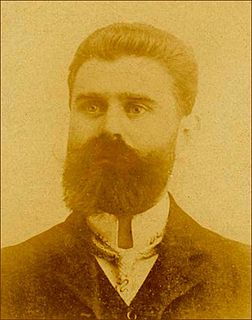
Manuel dos Reis da Silva Buíça was a Portuguese schoolteacher and soldier involved in the regicide of King Carlos I of Portugal and Prince Royal, Luís Filipe, during the events that became known as the Lisbon Regicide.

Évora is a city and a municipality in Portugal. The population in 2011 was 56,596, in an area of 1307.08 km². It is the seat of the Évora District. The present Mayor is Carlos Pinto de Sá of the CDU coalition. The municipal holiday is 29 June.

The Bemposta Palace, also known as the Paço da Rainha, is a neoclassical palace in the area of Bemposta, now the civil parish of Pena, in Lisbon. It was originally built for Queen Dowager Catherine of Braganza on her return from London to Lisbon and served for many years as her residence. It was then transferred to the Casa do Infantado, before becoming the residence of John VI of Portugal until his death. After Queen Maria II of Portugal transferred its title to the Army, it became the Portuguese Military Academy.

The Castle of Beja is a medieval castle in the civil parish of Beja, municipality of Beja, Portuguese district of Beja.

Santa Maria Maior is a freguesia and district of Lisbon, the capital of Portugal. Located in the historic center of Lisbon, Santa Maria Maior is to the west of São Vicente, east of Misericórdia, and south of Arroios and Santo António. It is home to numerous historic monuments, including Lisbon Cathedral, the Rossio, and the Praça do Comércio, as well as famous neighborhoods, such as the Lisbon Baixa, as well as parts of Bairro Alto and Alfama. The population in 2011 was 12,822,
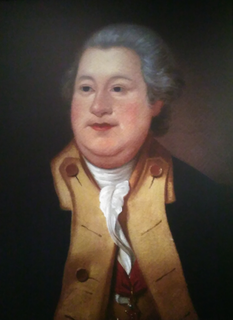
Manuel da Maia was a Portuguese architect, engineer, and archivist. Maia is primarily remembered for his leadership in the reconstruction efforts following the 1755 Lisbon earthquake, alongside Eugénio dos Santos and Carlos Mardel.
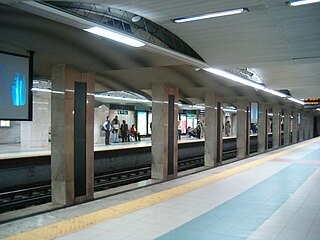
Rossio is a station on the Green Line of the Lisbon Metro. The station is located between Figueira Square and Rossio Square from which it takes its name.

Hospital de São José is a public Central Hospital serving the Greater Lisbon area as part of the Central Lisbon University Hospital Centre (CHULC), a State-owned enterprise.
